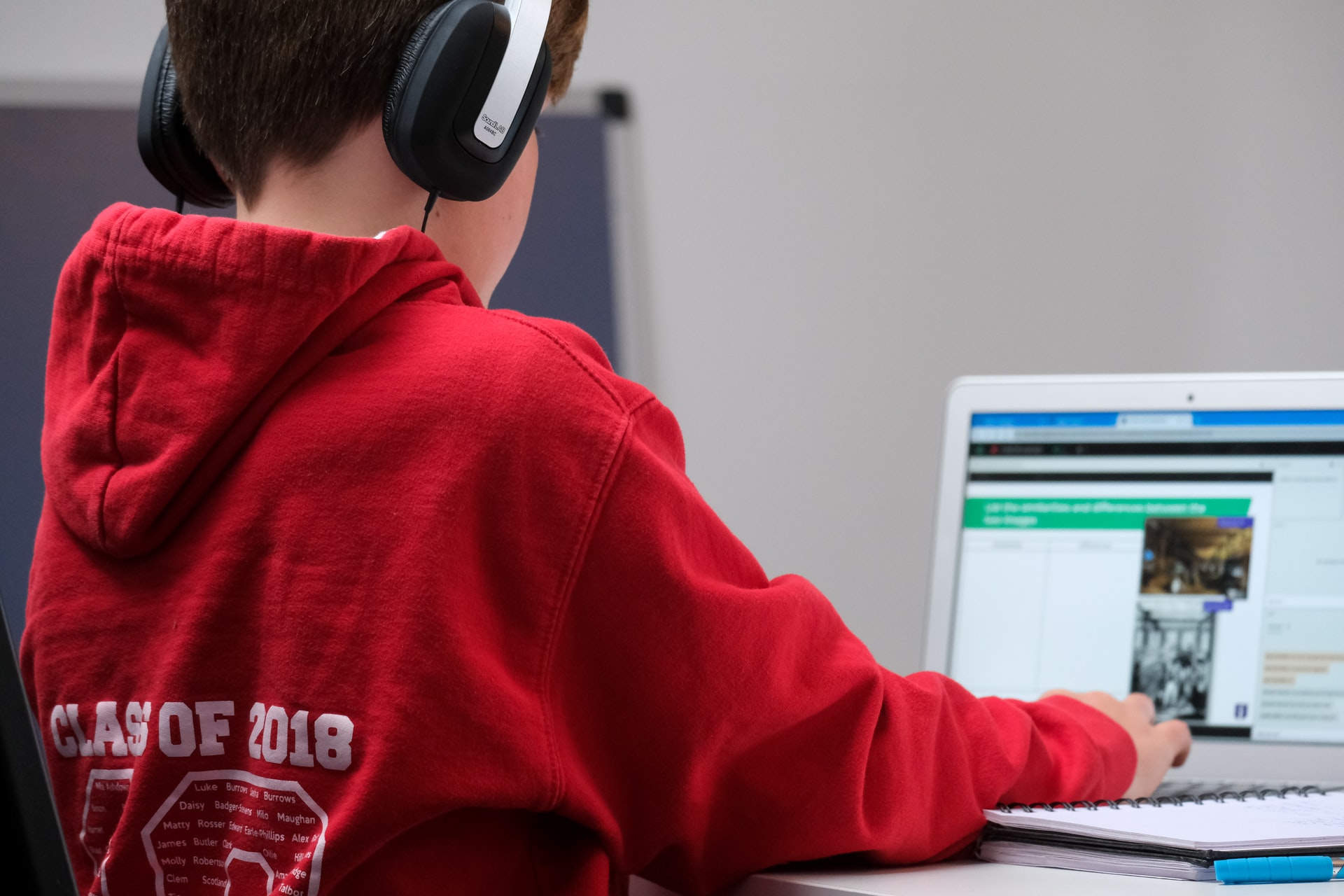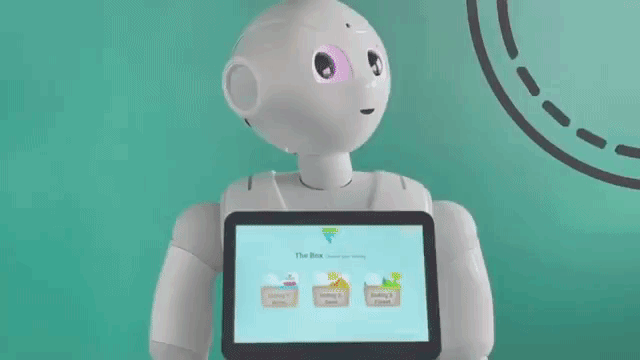6 Ways Edtech Tools Help Teachers Save Time
By Josiah Torvik, Teacher, St. Cloud Area MN School District 742
Edtech tools can prove invaluable to teachers who have limited time to juggle planning, teaching, and grading.
 Photo by Compare Fibre on Unsplash
Photo by Compare Fibre on Unsplash
- 0 Comments
- Aug 5, 2021 10:00:00 AM
- Posted by Natalia Galvis
- Topics: EdTech, STEM, Curriculum, Problem Based Learning (PBL), Artificial Intelligence, teachers, Coding, students, Codificación, Edchat, AI, Digital Technology, teaching, online, Inteligencia Artificial
How AI Technologies Support School Safety

Technology has advanced to the point where many tools, including AI technologies, can alert educators of danger before a disaster occurs.
- 0 Comments
- Aug 2, 2021 10:00:00 AM
- Posted by Natalia Galvis
- Topics: EdTech, STEM, Curriculum, Problem Based Learning (PBL), Artificial Intelligence, teachers, Coding, students, Codificación, Edchat, AI, Digital Technology, teaching, online, Inteligencia Artificial
5 Reasons to Set Up a Coding Program in your District
 Photo by Goran Ivos on Unsplash
Photo by Goran Ivos on Unsplash
Here’s how one Washington district has made coding a priority, even during the pandemic shutdown
- 0 Comments
- Jul 30, 2021 10:00:00 AM
- Posted by Natalia Galvis
- Topics: EdTech, STEM, Curriculum, Problem Based Learning (PBL), teachers, Coding, students, Codificación, Edchat, Digital Technology, teaching, online
4 Ways Artificial Intelligence is Revolutionizing Education
 Photo by Possessed Photography on Unsplash
Photo by Possessed Photography on Unsplash
Educators are using AI tools to assess students' skills and weaknesses, and students are benefiting from peer-to-peer learning and customized study guides. Here's a closer look at how some companies are developing artificial intelligence programs to improve education.
- 0 Comments
- Jul 29, 2021 10:00:00 AM
- Posted by Natalia Galvis
- Topics: EdTech, STEM, Grants, Curriculum, Problem Based Learning (PBL), teachers, students, Edchat, Digital Technology, teaching, online, funding, funds
How the 4 Cs prepare students for the real world
 Photo by Sandy Millar on Unsplash
Photo by Sandy Millar on Unsplash
The 4 Cs are more than skills taught in school--they'll stick with students throughout their academic, professional, and personal growth.
- 0 Comments
- Jul 28, 2021 10:00:00 AM
- Posted by Natalia Galvis
- Topics: EdTech, STEM, Grants, Curriculum, Problem Based Learning (PBL), teachers, students, Edchat, Digital Technology, teaching, online, funding, funds
How is technology impacting literacy?
By Content Provided by Stride, Inc.
 Photo by August de Richelieu from Pexels
Photo by August de Richelieu from Pexels
Literacy education is evolving to meet the needs of modern society--but the basics of picking up a physical book remain important
- 0 Comments
- Jul 22, 2021 10:00:00 AM
- Posted by Natalia Galvis
- Topics: EdTech, STEM, Grants, Curriculum, Problem Based Learning (PBL), teachers, students, Edchat, Digital Technology, teaching, online, funding, funds
Teachers, bring to life storytelling in your classroom with Pepper and NAO robots!
When we couple the storytelling concept along with their innate nature, it is clear to understand how utilizing both Pepper and NAO as a storyteller is an essential role for these social robots.

- 1 Comments
- Jul 20, 2021 11:54:31 AM
- Posted by Natalia Galvis
- Topics: EdTech, STEM, Grants, Curriculum, Problem Based Learning (PBL), teachers, students, Edchat, Digital Technology, teaching, online, funding, funds
6 Major Companies Supporting STEM Learning Programs
By Devin Partida
 Photo by Visual Stories || Micheile on Unsplash
Photo by Visual Stories || Micheile on Unsplash
A growing digital economy is bolstering demand for occupations in science, technology, engineering, and math. This growth will add more than half a million new computer jobs over the next eight years. However, a shortage of STEM professionals means many of these positions may remain empty.
That’s why education has quickly become a front-and-center issue for talent-hungry corporations. To encourage more interest in STEM fields, major companies are supporting learning programs by offering grants, resources, and new opportunities to the next generation of innovators.
- 0 Comments
- Jul 19, 2021 10:00:00 AM
- Posted by Natalia Galvis
- Topics: EdTech, STEM, Grants, Curriculum, Problem Based Learning (PBL), teachers, students, Edchat, Digital Technology, teaching, online, funding, funds
How Hidden Classroom Dynamics Can Stymie Girls in STEM
By Youki Terada
If we want to close the gender gap in science, we need to look at the invisible forces that shape classroom culture.
- 0 Comments
- Jun 29, 2021 10:00:00 AM
- Posted by Natalia Galvis
- Topics: Robotics, EdTech, STEM, Computer Science, Problem Based Learning (PBL), teachers, Coding, Robots,, students, STEMchat, Edchat, Digital Technology, teaching, online
4 Steps to Maximize Summer Learning
 Photo by Start Digital on Unsplash
Photo by Start Digital on Unsplash
Summer learning will play a critical role in students' return to full-time in-person learning this fall.
- 0 Comments
- Jun 25, 2021 10:00:00 AM
- Posted by Natalia Galvis
- Topics: Robotics, EdTech, STEM, Computer Science, Problem Based Learning (PBL), teachers, Coding, Robots,, students, STEMchat, Edchat, Digital Technology, teaching, online
Relevant Posts
Popular Posts
Subscribe to Email Updates
-
I Want To Learn MoreADDITIONAL INFORMATION


